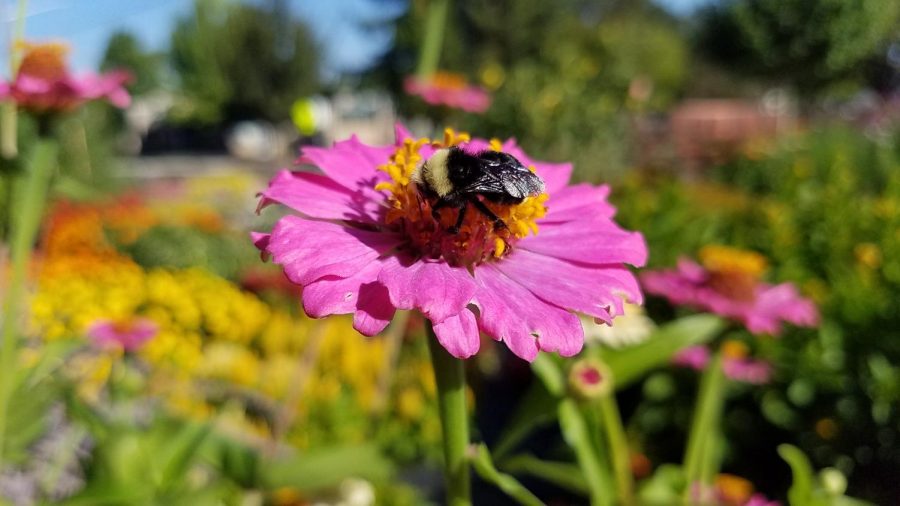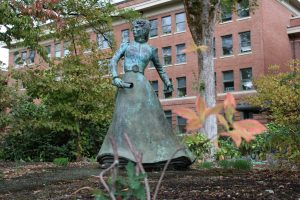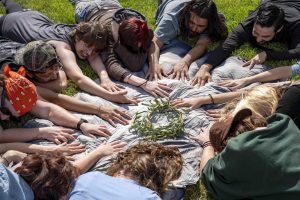Oregon State Saves the Bees
September 27, 2017
Everywhere you look you’ll see the slogan “Save the Bees.” But why? What makes bees so important? Well, BD is here to tell you not only why, but how Oregon State is saving the bees and how you can help, too.
Although bees can be rather pesky, they are crucial for maintaining our current agriculture. Many plants are able to pollinate themselves, but crops such as cantaloupe, broccoli, asparagus, cucumbers, almonds, blueberries, and many other crops we have grown dependent on require bees to do their pollinating. According to One Green Planet, bees are responsible for pollinating $19 billion worth of crops annually which equals to one third of the crops we eat. Not only do these crops feed the human race, they also feed the livestock that we depend on. Bees are a big deal!
Many believe it is just Honey Bees that are responsible for pollination, but they are not to take all the credit. There are hundreds of bee species that contribute to the pollination process. Bee gardens are a great option to help facilitate the lives of these insects and this is something you can do at home! Bee season is March to October so it is best to plant flowers that thrive during this time of year. Andony Melathopoulos, the Assistant Professor for Pollinator Health Extension here at Oregon State, shared some of the best plants to put in your bee garden. For the spring, Willows, Oregon Grapes, and Buckwheat are great. During the summertime some of the best are Wild Lilac, Natives Roses, and Lamb’s Ear. To round out the bee season, in late summer, early fall the best plants are Russian Sage, Brown-Eyed Susan, and Sawtooth Sunflowers. So, if you are interested in helping out our buzzing friends, start growing these plants at home!
Oregon State University plays an important role in Oregon’s fight to become more pollinator friendly due to a task force that occurred in Portland in 2013 that followed the poisoning of bumble bees. Melathopoulos shared that after this task force, OSU has taken on the responsibility to develop better educational resources and tools on pollinator health. To do this, Al Shay, our Horticulture Club Advisor, OCCUH Site Manager, and Horticulture Professor, has built several bee sites around campus to facilitate the lives of bees but also to conduct research.
According to Shay, “The Department of Horticulture is leading the charge to make the OSU campus more pollinator friendly.” Shay is in charge of managing the bee sites around campus and his students partake in the crucial steps in making these sites. The bee blocks provide nesting sites for over 900 different types of bees that inhabit the Pacific Northwest. Shay and his department are currently studying the floral component of the bee sites, examining which bees react best to which plants. Melathopoulos and Shay hope to eventually share their research in order to make Oregon a better environment for bees. Some of Melathopoulos’ favorite bee sites are located on the West side of Gilkey Hall and around the International Living and Learning Center and Arnold Dining Hall.
Shay and Melathopoulos are always looking for more student volunteers to join in their efforts to save the bees, so if you are interested contact them at [email protected] or [email protected].
Photography by Andony Melathopoulos
http://www.onegreenplanet.org/animalsandnature/why-bees-are-important-to-our-planet/






